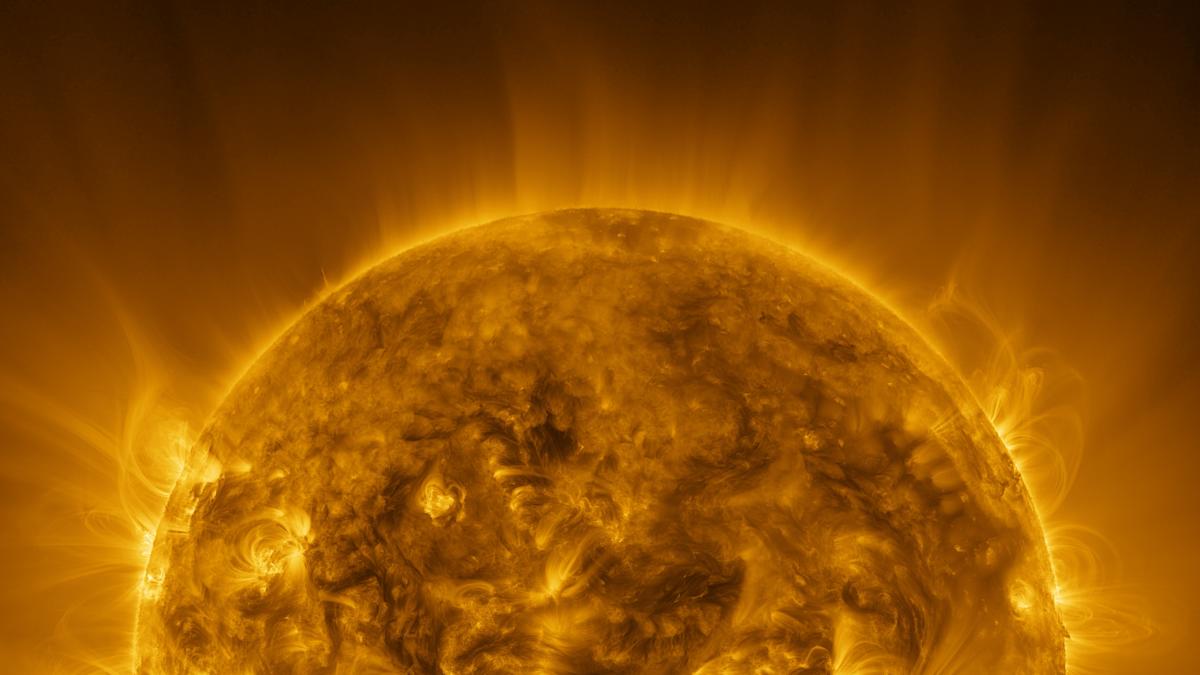Introduction to the Solar Orbiter Mission
The collaborative effort between the European Space Agency (ESA) and the National Aeronautics and Space Administration (NASA) on the Solar Orbiter mission has yielded a remarkable new image of the Sun, including its corona. Originally launched in 2020, the sun-observing satellite has not only provided a visually stunning perspective on our solar system’s central star but has also significantly impacted our understanding of solar phenomena, including solar wind.
The New Image of the Sun
Today’s released photo showcases the intricate details of the Sun’s atmosphere, with spun-sugar-like particles suspended in its magnetic field, intertwined with dark "filaments" of cooler material and areas of intense activity that produce solar flares. This image is a composite of 200 separate photographs taken by the Extreme Ultraviolet Imager (EUI) from a distance of approximately 77 million kilometers from the Sun. The EUI is crucial for making the traditionally unobservable parts of the Sun’s corona visible.
Technical Details of the Image
The image captures the Sun in unprecedented detail, thanks to the Solar Orbiter’s advanced instrumentation. The EUI’s capability to observe the Sun’s atmosphere in extreme ultraviolet light allows scientists to study the dynamics of the corona and the mechanisms that drive solar activity.
Contributions of the Solar Orbiter
The Solar Orbiter has been regularly providing high-resolution images of the Sun, offering a clear and detailed look at our closest star. Additionally, during its journey to its current position, the spacecraft has offered valuable insights into Venus, showcasing its versatility and the breadth of its mission objectives.
Access to Detailed Information
For those interested in more detailed information about the image, including interactive labels that explain the different regions of the Sun, the European Space Agency’s website is a comprehensive resource. The ESA website provides not only the technical details behind the image but also deeper insights into the Solar Orbiter mission and its ongoing contributions to solar physics.
Conclusion
The Solar Orbiter mission represents a significant advancement in our ability to observe and understand the Sun. Through its high-resolution images and the detailed data it collects, the mission is set to revolutionize our comprehension of solar dynamics and their impact on the solar system. As the mission continues, it is anticipated that further groundbreaking discoveries will be made, shedding more light on the mysteries of the Sun and its role in our cosmic neighborhood.
Source Link




